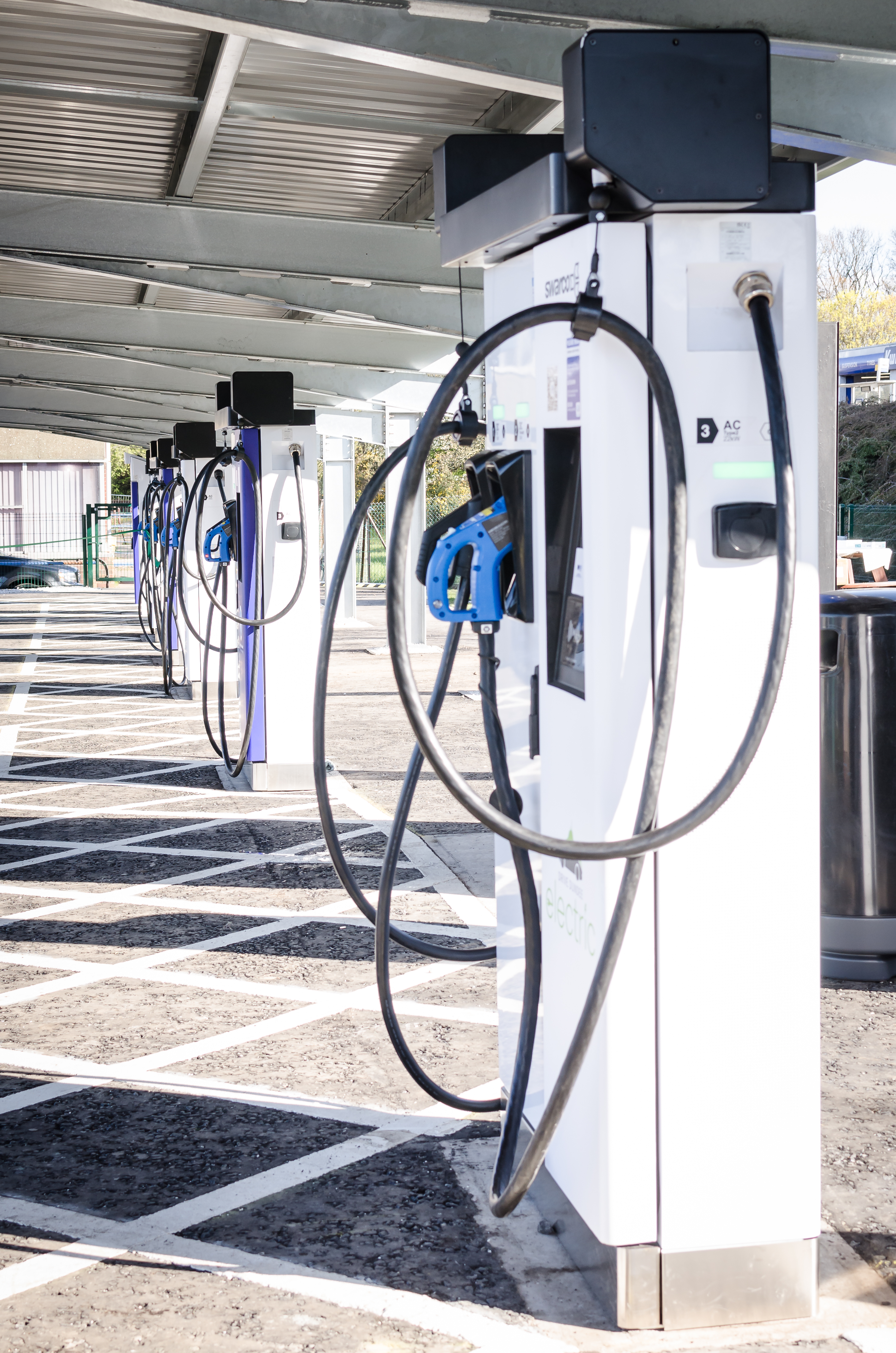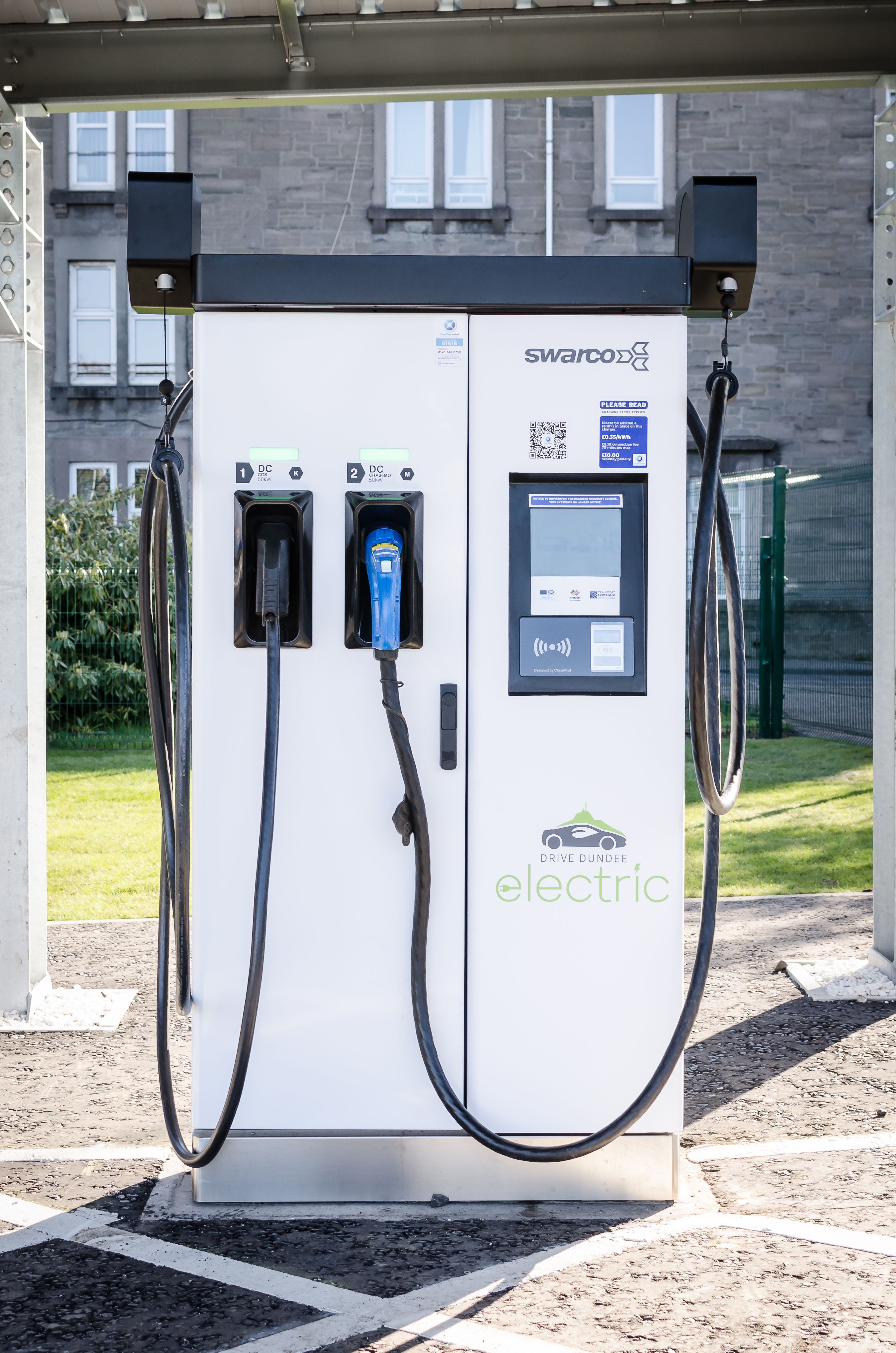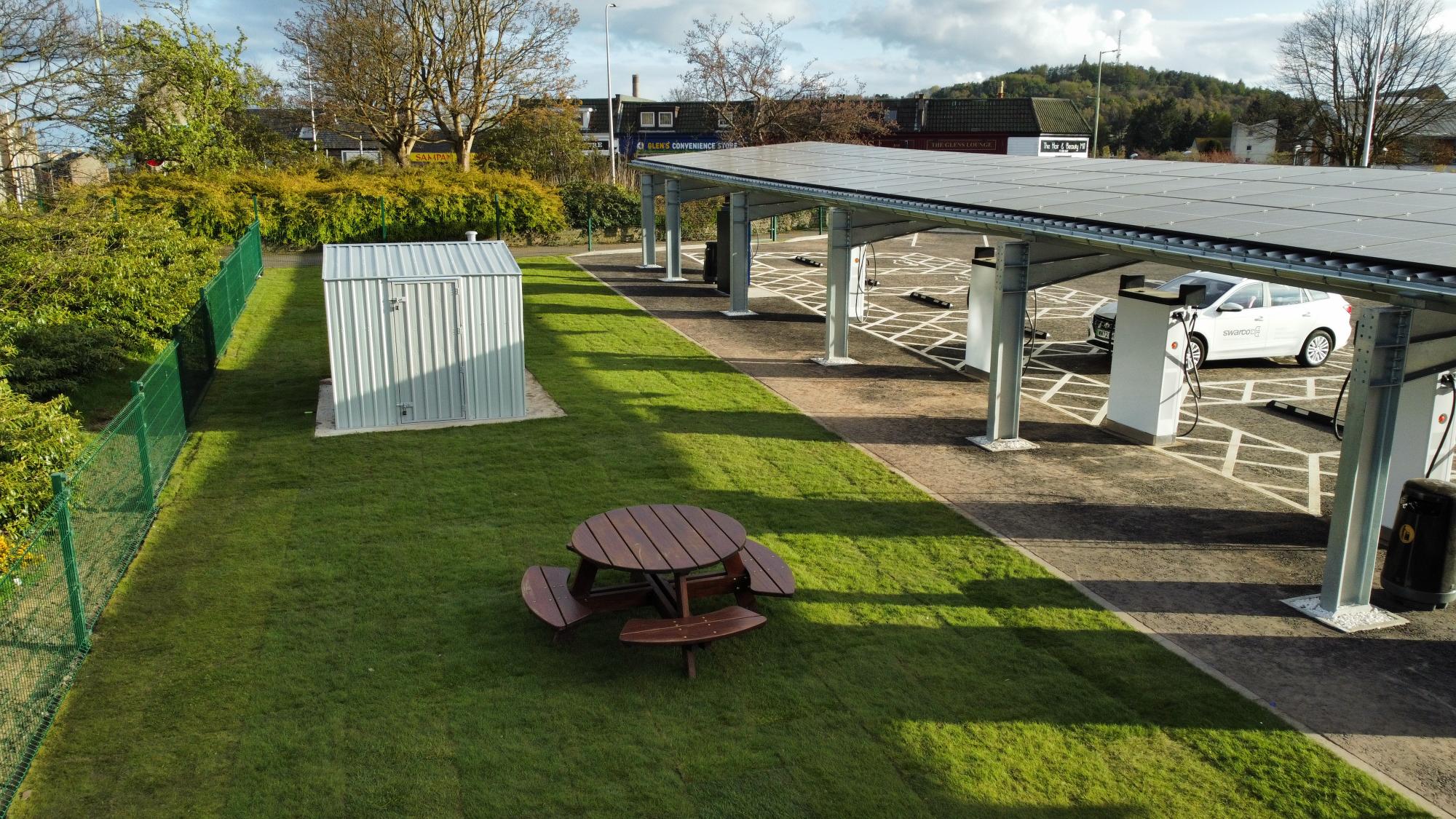Dundee City Council has recently opened a new electric vehicle (EV) charging hub at Clepington Road in Dundee, Scotland. The 4th Hub, as it is called, is a ground-breaking development that aims to improve accessibility and equity in EV charging infrastructure. The hub comprises 4 x 50kW and 1 x 150kW SWARCO charging units available for public use. With all the units being fully accessible bays, renewable drinking water solution, solar canopies, and a shared battery storage set up, it really is a hub that is the start of the journey to the future of EV Charging.



Fraser Crichton, the Corporate Fleet Manager at Dundee City Council, acknowledged that the absence of official guidelines and regulations for electric vehicle (EV) charging infrastructure, compounded by the presence of numerous manufacturers and investors, each with their distinct charge initiation and payment models, posed a challenge to many user groups in accessing EV charge points. The Council believes that for EV charging infrastructure to be accessible to all, EV bays must be designed with maximum accessibility a non-negotiable deliverable.
With that in mind, the 4th Hub has been designed to address the ten key points outlined below, as well as the upcoming BSI PAS Guidance 1899:2022. As the site develops, additional features such as rest stops will be integrated.
- A hub in a busy, central location with wheelchair access to and from the site and is within wheeling distance to local facilities.
- Signage that is consistent with other EV charging hubs across Dundee. A large entrance sign is at the driver’s eye level with clear directional signposting. Additional signposting for the pedestrian exit will also be provided.
- The site is well lit at all times, and shelter is provided via the overhead canopies for the majority of the charging process. A compromise was required here, the preference would be for the entire vehicle to be sheltered, however, this meant that the space around the charge points would be reduced and that access for WAV vehicles could be impacted. The decision was made that access to the charge points was the priority in this instance.
- There is a minimum of 1100mm between charge points and vehicles, with most spaces having 1200mm. A carefully considered wheel stop prevents vehicles from encroaching on this space and provides a safe space for manoeuvring in front of the charge point.
- All bays are 2400mm by 5000mm with 1200mm hatching around each one.
- All bollards, kerbs and plinths have been removed, enabling level access to charge points from bays, as well as access to and from the site.
- Street furniture has been minimised, with no obstacles in the near vicinity of charge points or on access routes to the exit.
- All surfaces are tarmac with appropriate drainage.
- Cables are supported by the manufacturers cable management system, longer cables of 5.2m have been provided to allow for WAV vehicles, and cables will have reflective yellow sleeves that contrast with the hard surfaces.
- Heights of connectors comply with current IET regulations.
The site’s design is ground-breaking in its approach to accessibility, and the features have been designed in consultation with disabled users, charities, and manufacturers. It is a starting point for other landowners and installers to learn from and hopefully improve on as awareness of accessibility and inclusivity grows.

In partnership with SWARCO and Urban Foresight, Dundee City Council’s “Charging Oasis” delivers a hub in a busy, central location with wheelchair access to and from the site and is within wheeling distance to local facilities. Signage is consistent with other EV charging hubs across Dundee, and the site is always well-lit, with shelter provided via overhead canopies for the majority of the charging process.
All bays are 2400mm by 5000mm with 1200mm hatching around each one, and there is a minimum of 1100mm between charge points and vehicles, with most spaces having 1200mm. All bollards, kerbs, and plinths have been removed, enabling level access to charge points from bays, as well as access to and from the site.
A water purification system has been integrated into the site, with collaboration from Swedish company Bluewater Group to capture rainwater from the canopies and turn it into premium drinking water for the hub and local citizens. While the Charging Oasis at Clepington Road is seen as a step change in charging deployment in the city, it is just the start in trying to make sure the infrastructure across the city is as accessible as possible.

Alongside this notable EV installation project, Dundee City Council also embarked on a major depot charging installation project on the same site at the same time. Once complete, the depot side at Clepington Road will have 21 x 7kW chargers, 1 x 100kW, and 2 x 50kW to support over 200 electric vehicles. The Council also plans to install solar canopies that will cover the spaces and offer protection. The solar power generation will produce 140kW and feed into a shared battery storage located next to the public charging hub. Dundee City Council has removed all the fuel tanks and contaminated land on the depot side, further highlighting the Council’s pledge to continue the move and commitment to electric vehicles.
